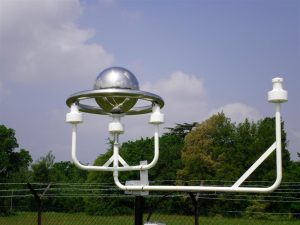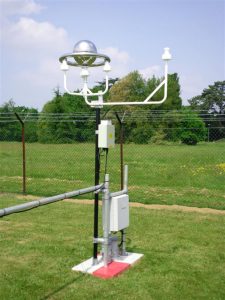Lightning detection
The Observatory hosts two lightning detectors – one by BIRAL, one Boltek sensor.
BIRAL lightning detector
This sensor is a self-contained standalone device that detects all forms of lightning (intra-cloud, cloud to cloud and cloud to ground) using a unique quasi-electrostatic operating principle developed by Biral. The operating methodology ensures very high detection efficiency whilst maintaining a false alarm rate close to zero.
Two MSc dissertations (by Emma-Louise Staughton and Magdalini Nikoli) have been written on aspects of the records from this sensor, and these are available for consultation in the Department’s Library.
This is a research instrument, and as such the outputs require bespoke software for analysis. At present, sensor output is logged to a memory card on the device and as such is not available in real time.
The photographs below show the Biral BTD-300 lightning detector prototype unit within the Observatory


Period of record available
Records commenced in 2012.
How to request climatological data from the Observatory
Sensor manufacturer link:
Boltek stormtracker
The Boltek StormTracker installed at the Observatory consists of a pair of crossed-loop antennas that detect the broadband radio emissions generated by lightning within a range of about 300 miles (~ 500km) from the observatory. The antennas are connected to a computer via a PCI card that analyses the magnitude and characteristics of each signal (sferic) and generates maps of lighting activity centred on the observatory as well as information about the relative location, polarity (positive or negative) and type (inter-cloud, IC or cloud to ground, CG) of each lighting stroke detected in the form of ASCII CSV files. Emma Hopkin wrote her MSc dissertation in 2014 on the records from this device; this is available for consultation in the Department’s Library.
This is a research instrument, and as such the outputs require bespoke software for analysis and are not available in real time.
Period of record available
Records commenced in 2013.
University of Reading climatological data Internal use only
Sensor manufacturer link:
This page updated February 2018